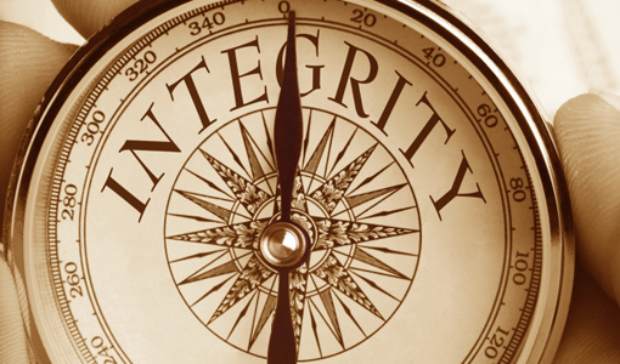The past two decades have seen an increased interest in defining ethical business practices. But how, exactly, does one define an ethical business practice and, more to the point, how does one measure ethical behavior? Rightly or wrongly,some would argue that a quantitative approach to measuring ethical behavior in a corporate entity is somehow alien to ethics and moral deliberation. Yet the SAIP Institute has developed a process – the Self-Assessment and Improvement Process – that seeks not only to support continuous improvement in areas of corporate social responsibility and business ethics, but also to quantitatively assess this most qualitative subject.
Measurement and moral reasoningJeremy Bentham, arguable the father of utilitarianism,held that one had to measure the amount of pleasure and pain that would result from an act in order to determine whether the deed was morally right or wrong. He identified seven variables in this quantitative assessment, including the intensity and the duration of the pleasure and pain produced by the action, and the number of people who experienced each sensation. According to Bentham, an act was morally praiseworthy if the net outcome of this measurement fell on the side of pleasure; otherwise, it was morally wrong.
Many ethicists have raised objections to Bentham’s theory. But Bentham reminds us that moral reasoning usually entails some kind of assessment. Before we perform an action, we try to predict the act’s likely outcomes and assess how well it conforms to certain enduring moral standards (telling the truth, keeping promises, honoring human dignity, and so forth). We also attempt to measure our moral character – we scrutinize our inclinations and motives, all of which shape how we think about our moral responsibilities. And when we are at our best, our reasoning places extra weight on others’ claims and concerns. This prevents us from being unduly influenced by our own interests and increases the likelihood of ethical behavior.
The measurements we typically make in our personal moral deliberations are more akin to those of a competitive diving judge than a timekeeper at a track meet. However, the above reflections suggest that assessment and measurement may be more closely connected to ethics than skeptics would allow.
Institutionalizing moral values through measurementThat said, it is possible to develop refined quantitative tools that can help business leaders address ethical challenges within their organization. And one of the biggest challenges facing them today is the development of a culture that promotes ethical conduct.
This new emphasis on culture is due in part to the 2004 federal sentencing guidelines for organizations that call upon companies to develop cultures that encourage employees to behave ethically, as well as comply with the law. It also is partly attributable to the influence of total quality management, which taught companies that it is more cost-effective to avoid product and service defects than to correct them after the fact. Extended to corporate ethics, this lesson underscores the need for firms to prevent ethical lapses. A culture that reinforces ethical conduct safeguards against morally problematic decisions and deeds.
Ken Goodpaster, holder of the Opus College of Business’ Koch Endowed Chair in Business Ethics, has identified three tasks leaders must undertake to create such a culture. First, leaders must orient their companies toward important moral values, such as respect for others, trustworthiness, transparency and fairness. Second, they mustembed those values within the organization’s processes and practices. Finally, leaders must make those values an enduring part of the firm’s identity. These tasks comprise the moral agenda of leadership.
The SAIP assists with the second task, that of institutionalizing moral aspirations within processes and practices. Patterned after the process pioneered by the Malcolm Baldrige National Quality Program, the SAIP enables business leaders to develop a thorough, data-based understanding of the processes that shape their company’s performanceon ethical issues. The SAIP assesses these processes using multiple criteria, including evidence of effectiveness, consistent application and continuous, systematic improvement. A set of performance benchmarks enables the organization to assign a numeric value to these processes. Higher scores on this scale reflect a greater degree of maturity. And the more mature a process is, the more likely it is to repeatedly produce desired outcomes.
Measuring corporate characterJust as our personal habits predispose us to behave in particular ways, an organization’s processes predispose it to certain patterns of behavior. Virtues are those habits which incline us to behave in morally commendable ways, and our moral character is simply the unique constellation of virtues (and vices) we have developed during our lifetime.The total score from a SAIP application can be understood as a measure of organizational moral character. It numerically suggests the likelihood that a company’s processes will consistently generate morally sound actions and behaviors. Unlike Bentham’s measurement process, the SAIP attempts to provide a measure of the source from which an organization’s decisions and actions issue. Such measurement can aid the formation of a firm’s moral character by helping leaders assess the trajectory of its development over time.
The SAIP’s focus on moral character places it within a venerable tradition of ethical reflection extending from Aristotle to such contemporary philosophers as Alasdair MacIntyre. St. Thomas Aquinas, after whom our university is named, is a major figure within this tradition. We can hope that he is pleased to see such work undertaken at auniversity under his patronage.
T. Dean Maines is president of the SAIP Institute at the Opus College of Business.





